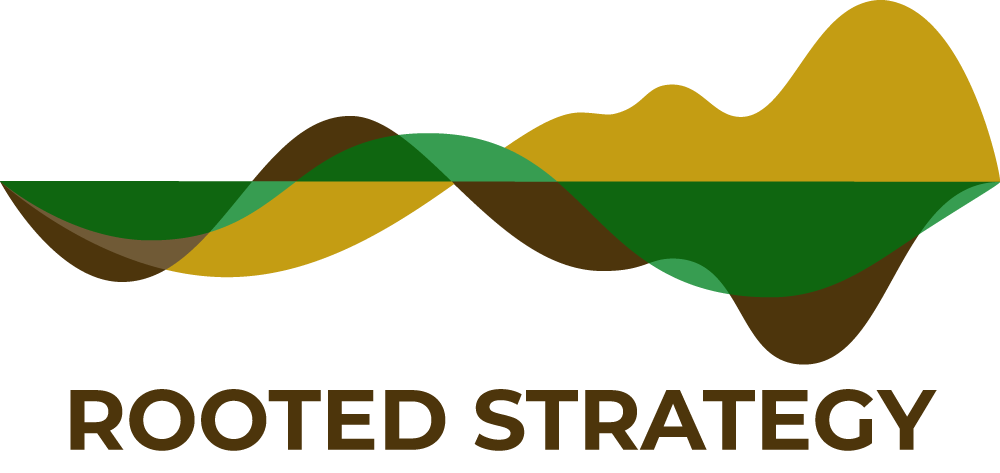FAQ: Values and Decisions
We often get questions from our clients and community who are working every day to grow their teams and advance their good work in the world. Today, we’re answering a couple of questions as an offering to our readers.
What questions would you like for us to answer next? Let us know with an email to info@rootedstrategy.com.
How do I communicate what I care about to my audience?
Let’s start with an understanding of what values are. Values are what we believe in and how we behave. They're not just words, but also how we act. Values aren't always written down, but they guide our choices and decisions. They provide guidance on how you should behave in different situations. Values can change over time as people grow and learn more about themselves and the world around them.
Because of the dynamic and sometimes intangible nature of values, one of the best ways to communicate values is through stories. Humans are wired to connect with stories. Stories get people to pay attention, tap into emotion, and motivate people to act. Storytelling takes practice, but there are some basic elements.
The plot: the context or condition that contain the story
The character(s): those individuals who are faced with a challenge and/or a choice
The outcome: the moral of the story, or the most important lessons that the listener should understand
Using these elements, you can play around with telling stories that communicate the values of your organization or network to the world.
How do we make decisions as a group?
One of the places organizations get stuck is when they reach a decision point. It may be as simple as “What should we order for lunch at our team retreat?”, or as complex as “What are the priorities that we’ll focus on for the next three years?”. One of the best things an organization can do to support its sustainability and success is figure out how to make decisions together. There is a delicate balance between the need to consider many different perspectives and opinions with the need to move the work forward.
Decision-making by consensus can support organizations to achieve that balance. It allows for discussion, agreement and disagreement, and the opportunity to offer alternative proposals. Rather than forcing people to vote in a “yes/no” binary, individuals can share the degree to which they support a proposal. One of my favorite tools is called the Consensus Gauge, where the goal is to get people in the “Consensus Zone”. In the Consensus Zone, there are levels of agreement, basically summarized as:
YES! I love this proposal
Yes, I can accept it.
Sure, I can live with it.
I don’t like it, but I won’t block it.
If everyone is in this zone, we can move forward with a decision - but not without people having a chance to share their perspectives. My favorite thing about this is that if someone chooses to block a proposal, they can either ask for more info or propose a viable alternative option.
Watch out for the trap of never-ending discussion in consensus decision-making. It’s helpful to give the group a time constraint (i.e. “we need to decide together by the end of this meeting”). It’s also helpful to have a fallback plan, in case the group can not reach consensus in time.
Regardless of the decision-making method, know that most organizational decisions are not permanent: just because we ordered pizza for lunch this time doesn’t mean pizza has to be on the menu at every team retreat. Embracing flexibility and adaptability as a team can give your team the boost that it needs to get unstuck.
Looking for more customized answers? We’re here to help!
Rooted Strategy provides tailored solutions to organizations, teams and networks looking to grow their impact.
Contact us to learn more.
